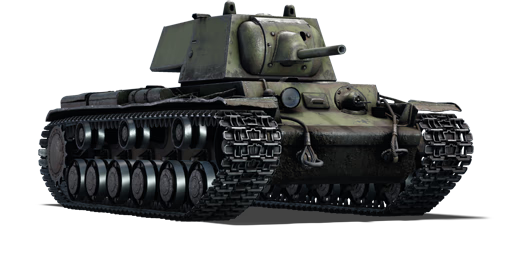



The KV-1 (L-11) is a Soviet heavy tank. This tank was introduced during the closed beta testing for Ground Forces before Update 1.41. The KV-1 L-11 is the first unlockable Soviet heavy tank which boasts raw firepower and armour at the cost of mobility.
The first heavy tank available in the Soviet branch. It's slow, difficult to manoeuvre and heavily armoured, and mounts the same gun of the T-34 (1940), sharing its awful penetration. In Rank II battles, this tank is tough to penetrate so you can lead the assault and absorb shots that will quickly destroy your lighter and better-armed teammates. It's better to prefer short-range engagements, and you must aim for weak spots, but your best weapon is other players, so act like a steel wall and cover other tanks with better guns.
| Ammunition | Type | Armor penetration (mm) at a distance: | |||||
|---|---|---|---|---|---|---|---|
| 10 m | 100 m | 500 m | 1000 m | 1500 m | 2000 m | ||
| APHEBC | 77 | 76 | 69 | 62 | 55 | 49 | |
| HE | 11 | 11 | 10 | 10 | 10 | 10 | |
| Shrapnel | 35 | 34 | 30 | 25 | 22 | 18 | |
| APBC | 90 | 88 | 79 | 69 | 60 | 52 | |
| Belt | Belt filling | Armor penetration (mm) at a distance: | |||||
|---|---|---|---|---|---|---|---|
| 10 m | 100 m | 500 m | 1000 m | 1500 m | 2000 m | ||
| AP-I/API-T | 13 | 12 | 7 | 3 | 2 | 0 | |












Mobility | |
|---|---|
Protection |
|---|
Firepower | |
|---|---|
